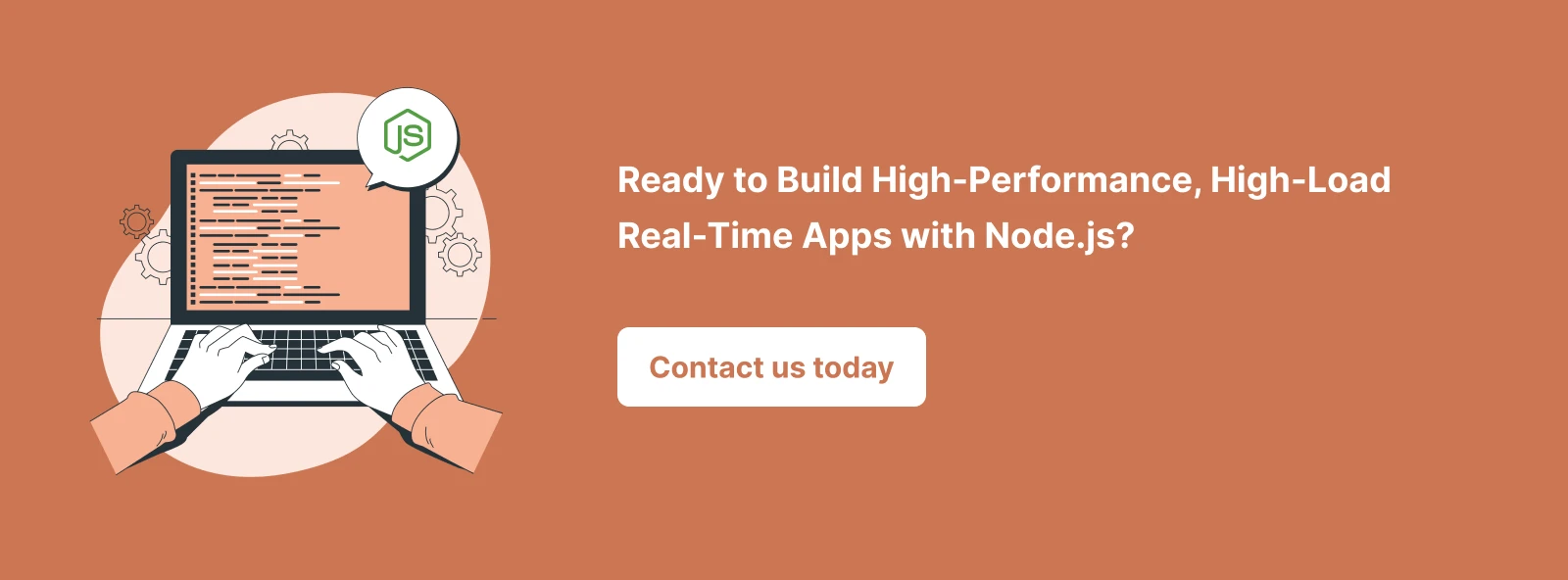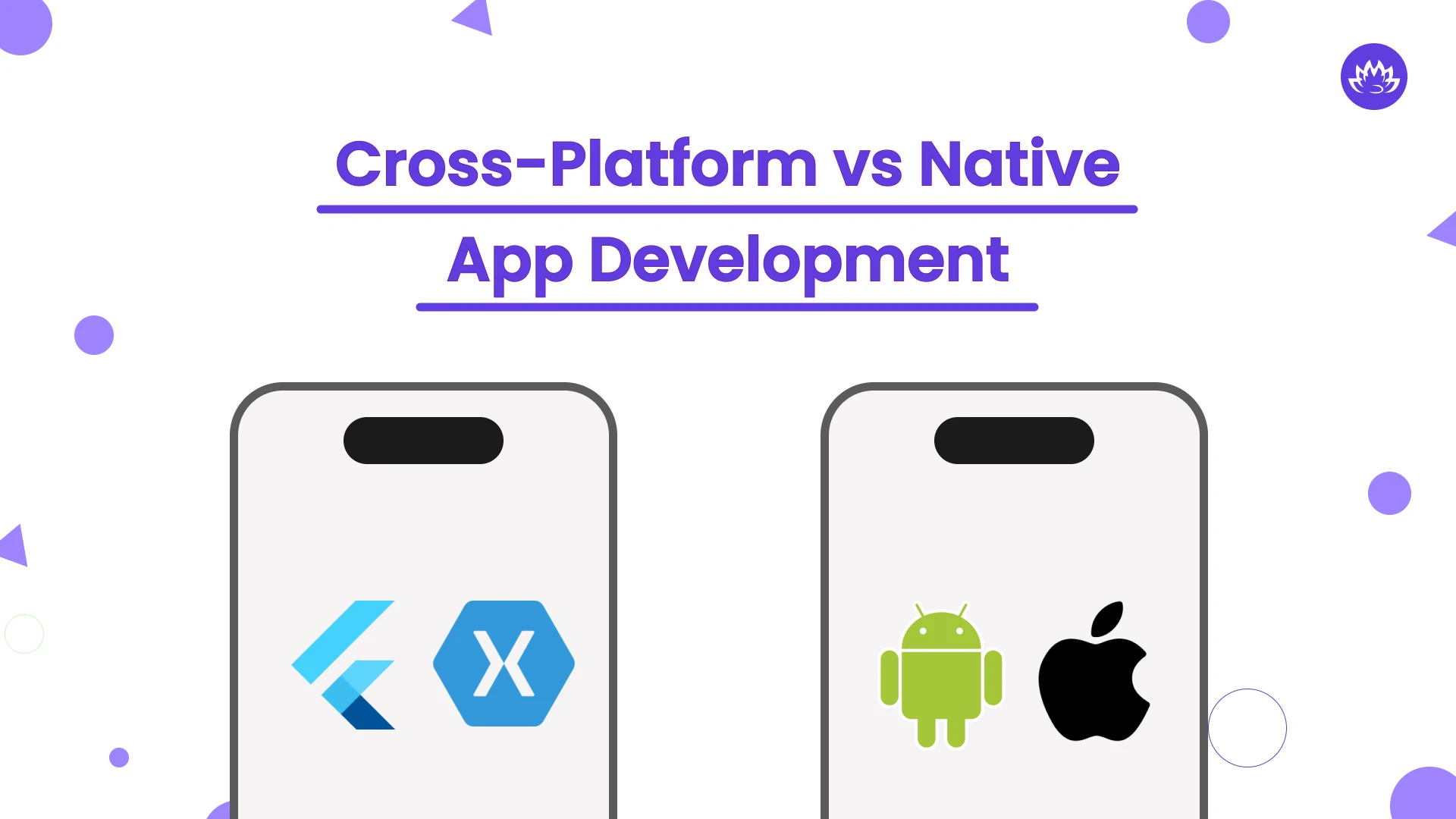Top tech giants like Netflix, LinkedIn, and Uber are using Node.js to offer scalable and smart applications to their millions of users. Node.js has asynchronous primitive, single-threaded, and simple processing. For any web app development, Node.js is the safest technology for building reliable systems for diversified users. It rapidly processes massive data and provides simplified analysis with speedier code deployments.
Nowadays, real-time communication has become one of the topmost services. In the evolving work environment, such apps are in demand that can exchange massive real-time data and can meet several business goals. To build such mobile applications, companies prefer Node.js development services as they can provide high performance, scalability, and functionality.
This blog is an effort from my end to help you understand the importance of implementing Node.js for developing real-time applications for your business.
What is Node.js?
In the 2023 Statista survey of most used web frameworks, Node.Js tops the chart with 42.65% of users out of the total surveyed responses. Node.js is the topmost choice for developers due to its unique features and benefits. It is a runtime engine for JavaScript and executes JavaScript code outside of a web browser. The runtime environment is based on the Chrome V8 engine.

Based on a single-threaded event loop, Node.js adopts a rigorous execution model capable of handling multiple amounts of client requests with great efficiency. Deployed to a web browser, it can manage and process client requests. It exhibits great flexibility in integrating a variety of other libraries, packages, and third-party APIs to make the application perform at its best. Hence, it can build dynamic and tailored mobile and web applications. Top examples are Netflix, LinkedIn, Yahoo, PayPal, and Uber.
What are Real-Time Applications?
Real-time applications provide immediate feedback and responses to the users. It takes just milliseconds to receive and send requests. Real-time communication provides a continuous connection between two user devices and the server, making instant data processing and communication possible. Hence, real-time applications provide interactive user experiences with updated information in real-time. Such apps can be instant messaging apps like WhatsApp, live video streaming platforms, collaboration tools, gaming platforms, social media feeds, or financial trading platforms. Such apps have revolutionized a wide range of industries due to seamless interaction and enhanced user engagement.
Node.js Architecture

Scalable applications can handle massive workloads. This is where Node.js plays a crucial role. To improve the app availability, it can rapidly scale up the app and its resilience in real-time. It has an event-driven and non-blocking nature that keeps it the topmost choice for developing real-time applications.
Let us understand how its single-threaded loop architecture works:
-
It maintains the average amount of thread pool to manage requests
-
When it receives a new request, it queues it. Event Loop comes into action and it continuously starts taking newer requests
-
As the Event Loop gathers incoming requests, it also checks out if any of these requests need to be blocked by I/O operations. If there are no such requests, it starts processing the requests and sends out responses.
-
If there are any blocked operations, it is threaded with an internal thread from a reserved pool of worker threads.
-
After completing the blocking operation, the Event Loop revisits the queued responses and efficiently processes non-blocking responses.
Node.js architecture
During the web app development, Node.js adopts this threading approach to enhance operational efficiency and to improve the speed of task completion. Other technologies like ASP.NET, HTML, etc handle concurrent clients very differently as compared to Node.js. The architecture of Node.js has several other benefits.
-
Simplifies managing concurrent client requests.
-
Apps built on Node.js use fewer threads and, hence need less memory or processing power
-
Event Loop enables efficient handling of more concurrent client requests without the requirement of additional threads
-
Has multi-threading and parallel processing.
Why Choose Node.js for Building Real-Time Applications?

Single Language
JavaScript is a dynamic programming language used for both frontend and backend. Hence, both these sides have a single language, enabling seamless data movement between the client and the server. It gives optimal synchronization between the client and server, simplifying the development process, and enhancing productivity and scalability.
Event-Driven Architecture
With its event-driven architecture, Node.js can handle multiple requests at the same time. It can continuously line up requests and respond to events at great speed. This feature makes Node.js the best option for those apps that need swift communication. For instance, apps like live streaming and online gaming need to manage multiple connections concurrently. Node.js can swiftly respond to more events such as messages, user interactions, etc.
More Speed
Node.js provides stunning speed to create high-performing real-time applications. One of the main reasons this happens is because Node.js is built upon the Chrome V8 engine. It compiles JavaScript into machine code at great speed. Node.js performance improves with the engine performance. Moreover, it can handle various concurrent requests due to its non-blocking I/O feature.
Reusable Code
Code reusability enables developers to create mobile-based apps quickly and seamlessly. In addition, Node.js offers an exceptional speed that facilitates real-time app execution with zero delay. It can swiftly process massive data volumes, ensuring immediate user responses.
Effective Data Handling
Node.js has a command over handling massive data. Users can add and use information on the go from any mobile device. In addition, the application can also run logic at the same time by giving the best responses. Hence, the app works faster and can save more amount of time.
Supports JSON
JSON simplifies data exchange between the server and the client. Node.js supports JSON by simplifying its language, unlike other technologies that convert JSON into binary models. With the use of JavaScript, Node.js can handle this, making seamless data exchange.
Scalability
Scaling applications with Node.js is effortless and hassle-free. You can add new nodes and can scale real-time applications horizontally. For vertical scaling, you can integrate more resources into a single code.
Proxy Server
Node.js performs brilliant proxy-server optimization for real-time apps. This enables seamless communication between servers and clients. In addition, it distributes workloads with great security. It can also manage WebSocket connections with great efficiency, keeping the apps updated with the necessary information in real time.
SEO Friendly
Node.js is also an ideal choice for developing single-page applications. SPAs in real-time can create SEO challenges as they need dynamic content rendering. Node.js provides server-side rendering and offers SEO solutions by enabling the server to produce HTML content initially before client-side rendering. It enhances SEO search engines with fully-rendered indexes in HTML and boosts its exposure and rankings.
Thriving Community
Node.js has a vibrant and dynamic community of innovative and skillful developers. They offer constant support for real-time application development. They address the specific needs and challenges of new developers in building real-time apps. Moreover, developers can harness various tools like NPM (node package manager) for enhancing creativity and exploring different types of real-time app development processes.
Lesser Development Work
With its single language ecosystem and extensive library of reusable modules, it considerably reduces development efforts. This is an advantageous approach for building innovative apps that need faster development and frequent updates.
Top Libraries and Frameworks Applied with Node.js to Ensure Real-Time Application Development
Express.js
-
The highly acclaimed framework used within the Node.js community for web app development.
-
Mostly used for Node.js enterprise application development that demands single-page applications, multi-page or hybrid web applications in real-time.
-
Simplifies the development process with efficient routing and middleware support
-
Seamless management of requests and application structuring.
-
Mostly used for RESTful APIs for backend services.
Nest.js
-
Nest.js is a dynamic and progressive framework used to build complex real-time applications.
-
It uses Node.js and helps developers write secured and maintainable codes.
-
Has a modular structure that promotes code reusability and better management.
-
It has a variety of tools and features with integrated support for REST APIs, GraphOL, etc.
-
It can create reliable, scalable, and well-coded applications.
Socket.io
-
It is the most renowned event-driven library, operating effectively in developing stellar real-time applications.
-
It provides real-time communication between clients and servers, removing traditional response patterns.
-
Socket.io contains client and server components and promotes seamless integration.
-
It is mostly used for building chat apps, interactive gaming, and live analytics, enabling immediate data transfer.
Sails.js
-
Embedded with MVC architecture, Sail.js empowered Node.js developers to harness the benefits of the Node.js ecosystem.
-
Sail.js and Node.js for enterprise application development is an ideal choice as it offers structured patterns, and organizes the app logic.
-
It builds APIs and provides seamless data exchange and real-time interaction in applications.
-
Integrates well with various databases and reduces the amount of boilerplate code.
Final Thoughts
The overall choice to build real-time applications with Node.js depends on your project requirements. However, with our years of experience in creating resilient and productive real-time apps with Node.js, we strongly recommend this technology. Its robust features and capacity to handle massive client requests make it a go-to choice.
Lastly, it continues after choosing the right technology. You also have the right Node.js Development Company to harness the advantages of Node.js services. You need professional assistance from a specialized team of Node.js developers who have the knack for offering tailored solutions. Whitelotus Corporation has a robust team of Node.js developers who can help you build innovative real-time applications with the right set of technologies. Get in touch with us to learn more about our services.
Author
-

Sunil is a result-orientated Chief Technology Officer with over a decade of deep technical experience delivering solutions to startups, entrepreneurs, and enterprises across the globe. Have led large-scale projects in mobile and web applications using technologies such as React Native, Flutter, Laravel, MEAN and MERN stack development.
View all posts














